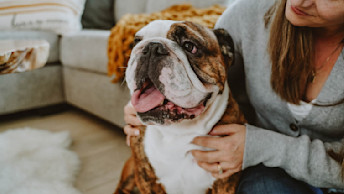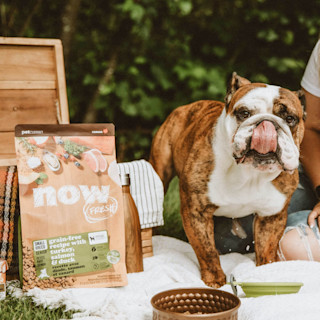February 20, 2025
Dog Body Score Chart: Is My Dog Too Thin?

Maintaining a healthy weight is one of the most important ways to keep your dog happy and thriving. A dog’s body condition score (BCS) is a simple tool that helps pet parents assess their dog’s weight and overall health. This guide will walk you through the essentials of understanding your dog’s body condition score and how to determine if your dog is at a healthy weight.
What Is a Body Condition Score?
The Body Condition Score (BCS) is a standardized method of evaluating a dog’s body fat and muscle tissue, using a scale that ranges from 1 to 5. A score of 1 indicates a dog that is extremely thin, while 5 reflects a dog that is severely obese. The ideal score for most dogs is a 3.
Using a dog body score chart makes it easy to assess your pet. The chart outlines specific characteristics for each score, such as visible ribs, abdominal tuck, and fat deposits.
How to Assess Your Dog’s Body Condition Score
To assess your dog’s BCS:
Ribs: Run your hands gently along your dog’s sides. You should be able to feel their ribs without pressing too hard, but they should not be visibly protruding.
Waist: Look at your dog from above. There should be a visible waistline between their ribs and hips.
Abdomen: When viewed from the side, your dog’s abdomen should tuck up towards their hips rather than hanging down.
Compare your observations with the dog body score chart to find their score. If you’re unsure, consult your veterinarian for a professional assessment.

Is My Dog Too Thin?
A score of 1 to 2 on the BCS chart indicates that your dog may be underweight. Signs that your dog might be too thin include:
Ribs, spine, or hip bones that are clearly visible.
Little to no fat covering the ribs.
A prominent abdominal tuck and severe waistline.
If you’re asking, “Is my dog too thin?” it’s important to evaluate their diet and overall health. Chronic illnesses, parasites, or insufficient calorie intake could be contributing factors. A veterinarian can provide guidance on addressing weight gain safely.
Is My Dog Overweight?
On the other end of the spectrum, a BCS of 4 to 5 suggests that a dog is carrying excess weight. Signs of an overweight or obese dog include:
Ribs that are difficult or impossible to feel under fat.
Lack of a defined waistline when viewed from above.
A rounded or sagging abdomen.
Carrying extra weight can put dogs at a higher risk for secondary health issues like joint pain, heart disease, and diabetes. To help your dog lose weight, focus on portion control, increasing exercise, and choosing a balanced diet.
Tips for Maintaining a Healthy Weight
Regular Exercise: Aim for daily walks, playtime, or other activities that match your dog’s energy level.
Balanced Diet: Feed your dog a diet appropriate for their breed, age, and activity level. Avoid overfeeding and limit treats.
Routine Checkups: Regular vet visits can help monitor your dog’s weight and catch any issues early.

Our Recommendation
Food Tailored to Your Dog’s Breed Size & Life Stage
Explore our selection of premium dog food recipes. Tailored to your dog's breed size and life stage and made with fresh meats and fish and nutrient-rich fruits and veggies.
View dog foodWhen to Consult a Veterinarian
If your dog’s BCS falls outside the ideal range or you’re unsure about their weight, consult your veterinarian. They can help identify underlying health concerns and create a tailored plan for weight management.
In Conclusion
By understanding your dog’s body condition score, you’re taking an essential step toward ensuring their long-term health and happiness. Use the dog body condition score chart as a guide, and remember that even small adjustments can make a big difference in your pet’s quality of life.



